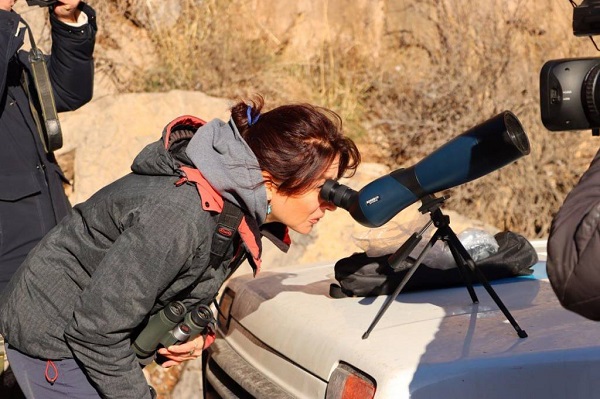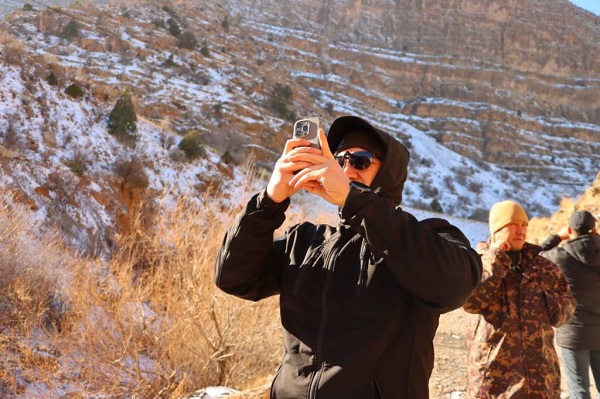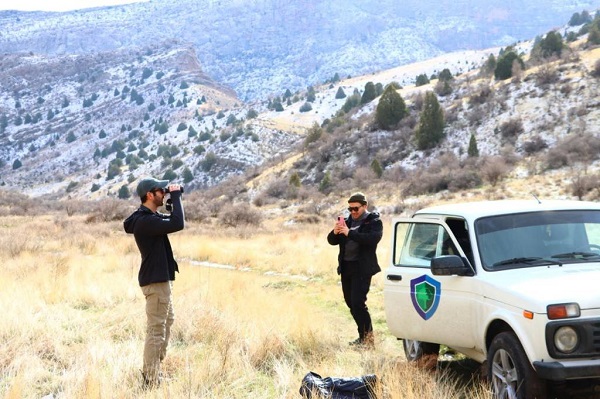Arailym Temirgaliyeva
The Surkhan State Nature Reserve, located in Surkhandarya region, cooperates with the Koytendag State Nature Reserve of Turkmenistan to protect the flora and fauna of the region, UzA reports.
Nature reserves rich in flora and fauna are on both sides of the Kuhitang mountain range.
Koytendag has an area of 27,140 hectares and is located at an altitude of 850 to 3,137 meters above sea level. The reserve is rich in flora and fauna, and more than 140 species of birds can be found here. Dinosaur footprints and unique caves have also been discovered on its territory.
Photo credit: uzA
The Surkhan State Nature Reserve, located on the Kuhitang Mountain range’s eastern slope, covers 23,802 hectares. Its highest point is the peak of Ayribobo, which reaches 3,137 meters above sea level. More than 190 species of animals and more than 800 species of plants can be found here. The reserve is also known for rock carvings created in the Zarautsoy area during the 12th-7th millennia BC. 25 species of animals are listed in the Red Book of the Republic of Uzbekistan.
Photo credit: UzA
“Last year, another innovation was implemented in our reserve”, says Rustam Turdiyev, Director of the Surkhan State Reserve. “Within the framework of the joint project of the Ministry of Ecology, Environmental Protection and Climate Change of the Republic of Uzbekistan, the Global Environment Facility and the United Nations Development Programme “Sustainable Natural Resource Use and Forest Management in Key Mountainous Areas Important for Globally Significant Biodiversity”, as well as the project “Improving the potential and connectivity between nature reserves of Turkmenistan and Uzbekistan”, implemented by the Critical Ecosystem Partnership Fund (CEPF) has launched the implementation of a smart patrol system”.
This system is a spatial monitoring and reporting tool that includes advanced technologies for the sustainable use of natural resources and forestry in mountainous regions important for globally significant biodiversity. The system enhances the ability to respond promptly during various incidents. It monitors territories in real-time, tracking all actions and events. The system can collect data from multiple sources, which is essential for improving regional security and protecting the population of rare animal species.
According to experts, the smart patrol system helps analyze the collected data and develop strategies to identify and prevent threats. It can be integrated with other security systems, including video surveillance systems. The data obtained with the help of the system makes it possible to improve planning and increase emergency preparedness. Automation of security functions is an essential factor for more efficient use of human resources and increases the productivity of reserve staff.
Last year, workshops were held on implementing the smart patrol system. They were attended by employees of the Institute of Zoology of the Academy of Sciences of the Republic of Uzbekistan, the faculty of Termez State University, representatives of the Center for Large Landscape Conservation, foreign experts of the project, as well as employees of two neighboring nature reserves. The experts analyzed the functioning of the smart patrol system and made their suggestions. The participants discussed joint efforts to preserve the ecological integrity of nature reserves.
Photo credit: UzA
The foreign partners visited the Surkhan State Nature Reserve, where they got acquainted with the flora and fauna, natural conditions, the habitat of wild animals, and the work processes of the reserve staff. The protection of migrating wild animals, accounting for their numbers, and identifying and eliminating factors hindering population stability were discussed.
“The eastern slope of the Kuhitang Range belongs to the territory of Uzbekistan, and the western slope belongs to the Turkmen Nature Reserve”, said Shoniyaz Mengliyev, Deputy Director of the Koytendag State Nature Reserve. “Therefore, the flora and fauna of the two reserves are very similar. The Markhur, or screw-horned goat, is declining in numbers worldwide. Markhur is listed in the Red Book of our states. Cooperation with the Surkhan Nature Reserve is important for conserving plants and animals. We have agreed on the joint protection of the Markhur and Bukhara mountain sheep, tracking their migration. An expedition was organized to include Markhur in the UNESCO List. During the visit, we got acquainted with the work of the reserve. According to experts, wild animals are separately fed here in winter. It also has a positive effect on the conservation of fauna”.
According to available data, the migration of animals and birds such as the Markhur, Bukhara mountain sheep, bearded vulture, black vulture, and golden eagle from the territory of the Surkhan State Reserve to neighboring countries has been recorded. The established cooperation with the Koytendag State Nature Reserve aims to preserve and increase the wild animal population.
As earlier reported, UNESCO and the World Meteorological Organization (WMO) announced the official launch of the International Year of Glaciers’ Preservation, “marking a crucial milestone in global efforts to protect the vital ice that provides freshwater to over 2 billion people.” /// nCa, 17 February 2025 (cross post from Kazinform – originally published at https://en.inform.kz/news/uzbekistan-and-turkmenistan-environmentalists-seek-to-include-markhur-in-unesco-list-0f6af6)


